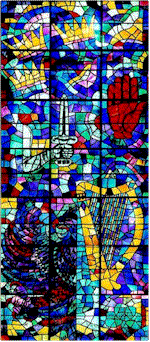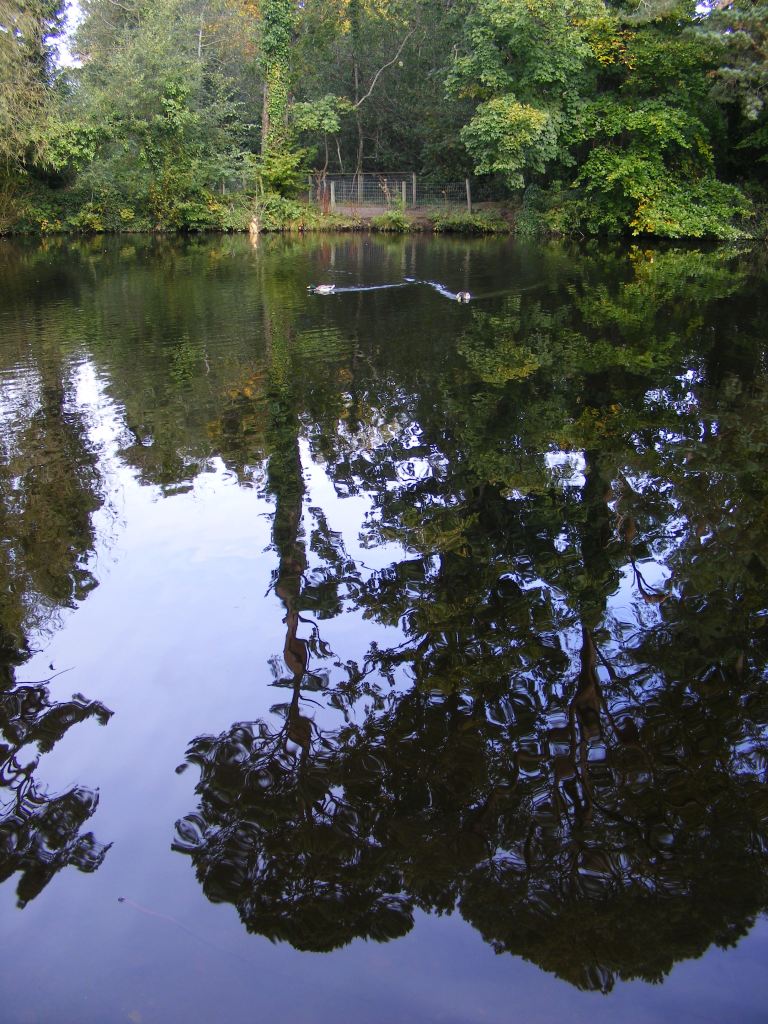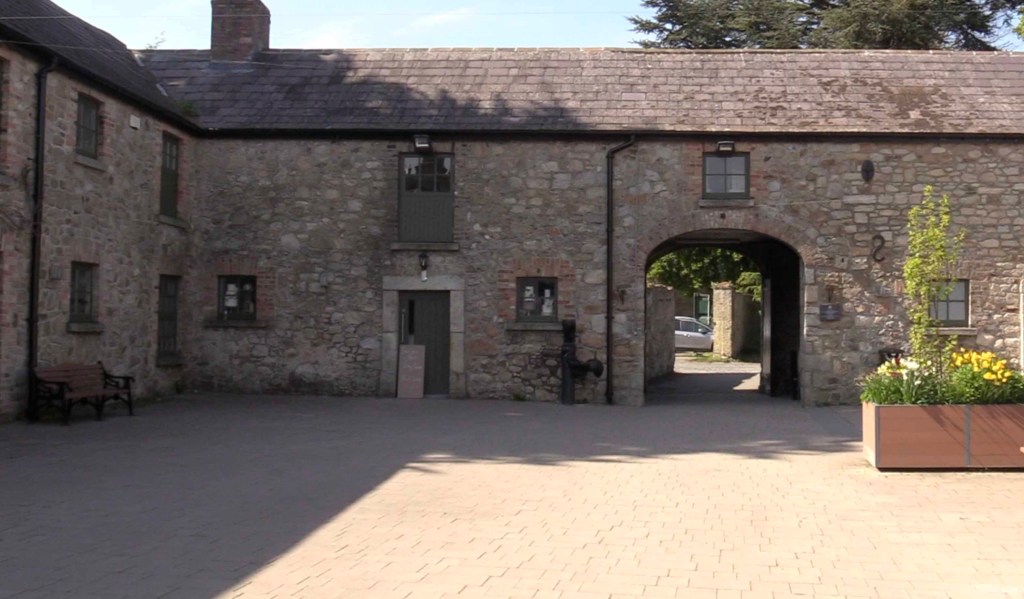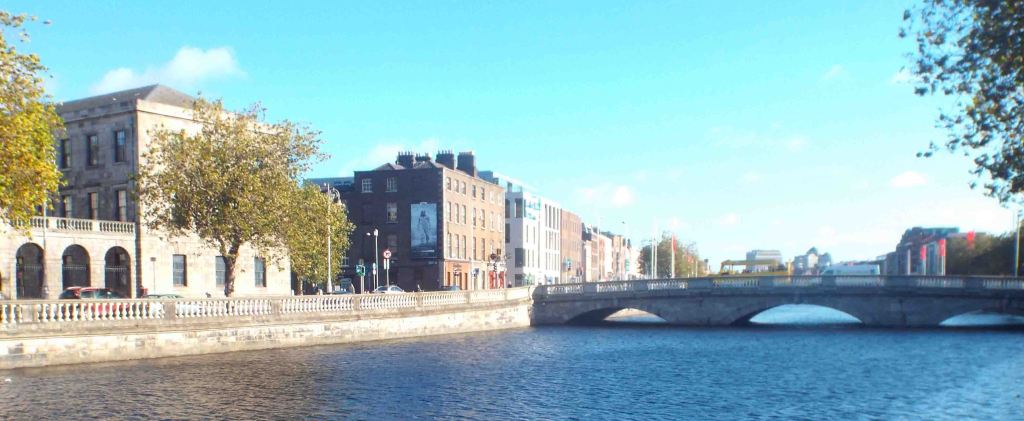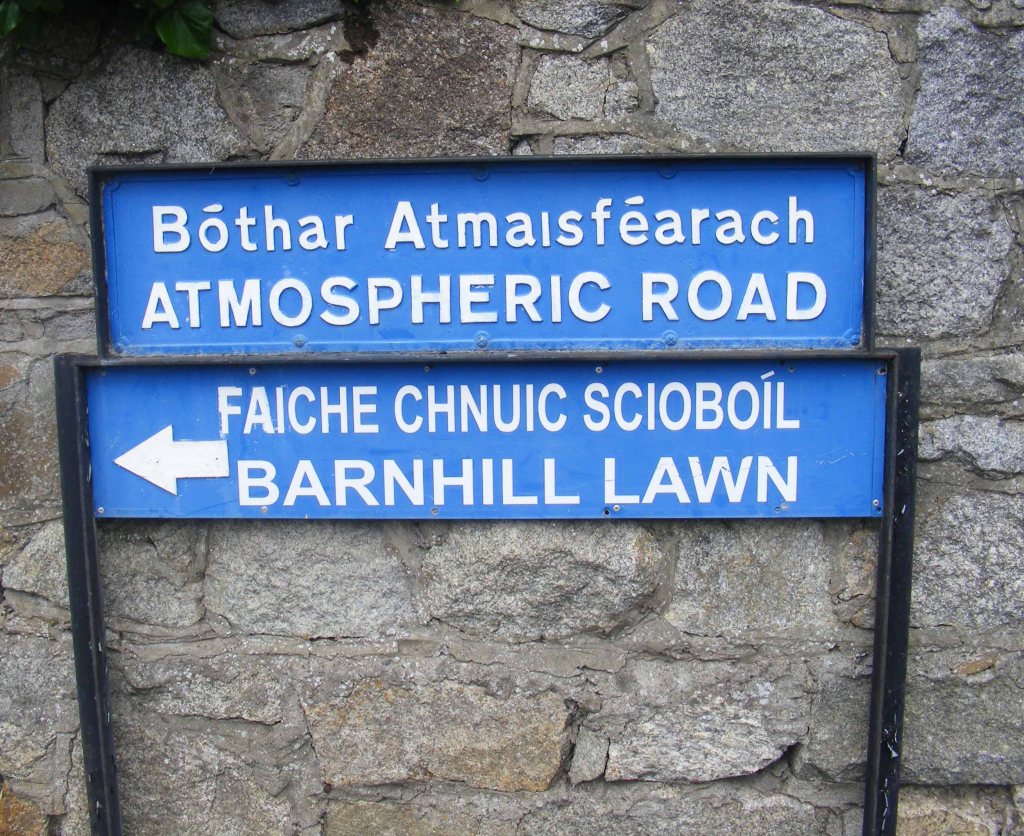Eva Sydney Hone – better known as Evie – was born at Roebuck Grove, Clonskeagh, Dublin on 22 April 1894. She was the youngest of four daughters of Joseph Hone, a director of the Bank of Ireland, and Eva Hone (née Robinson), who sadly died only two days after Evie’s birth. Roebuck Grove is now known as the University Lodge since the property was bought by University College Dublin (UCD). She was related to the noted 18th century Irish artist Nathaniel Hone.
She was educated at home, but after contracting poliomyelitis at the age of twelve she was sent to Switzerland for specialist treatment. Although her condition improved it was not a total recovery and she was a semi-invalid for the rest of her life. It is all the more amazing that she overcame this restriction to become a painter and later a successful and internationally recognised stained-glass artist. In 1913 she went to London and studied at the Byam Shaw School of Art and the Central School of Arts and Crafts under Bernard Meninsky. In London she became friends with Mainie Jellet, before they went to France and studied with cubist painter Albert Gleize, making them pioneers of the modern movement in Irish painting.
She returned to Dublin and lived in Lucan, and by the early 1930s she had become interested in stained-glass. In 1933 she joined An Túr Gloine, and one of her first pieces was ‘The Annunciation’, in Taney church, Dundrum, Co. Dublin. Her work was well received and in 1939 she was commissioned to produce a piece, My four green fields, for the New York World Fair which won first prize. It is now in Government Buildings in Dublin. Another piece that brought international recognition was her east window in Eton College chapel, Windsor. It was completed in 1952, covers over 900 square feet and comprises more than 40,000 pieces of glass.
In 1954 was elected an honorary member of the RHA. She died 13 March 1955 while entering her parish church at Rathfarnham.


